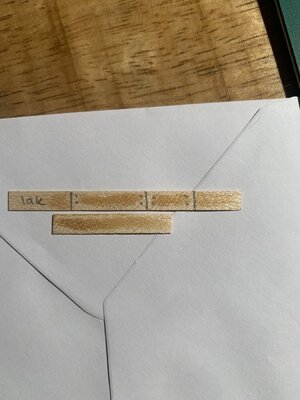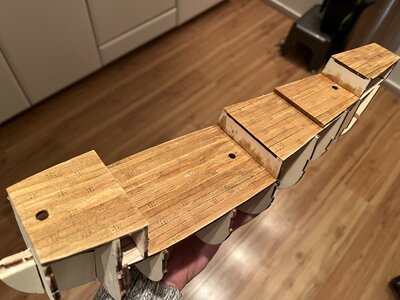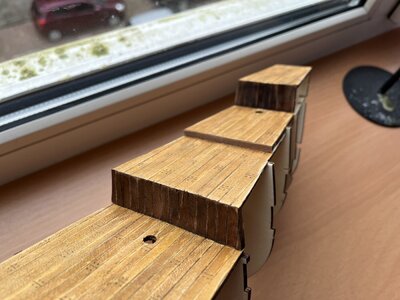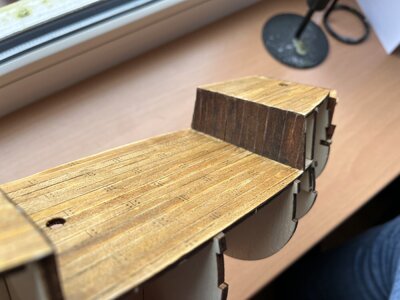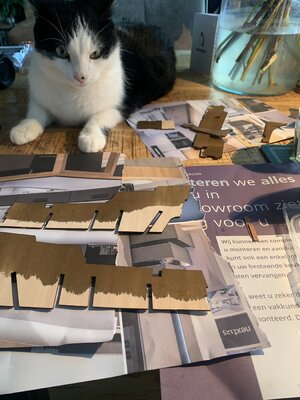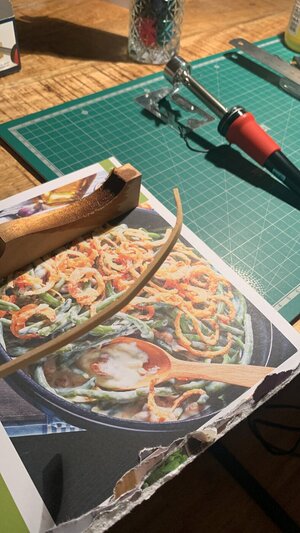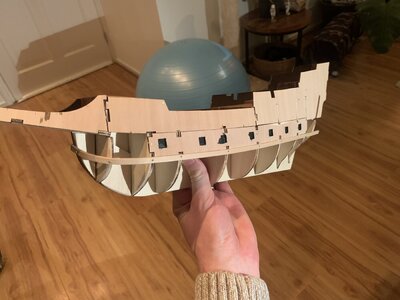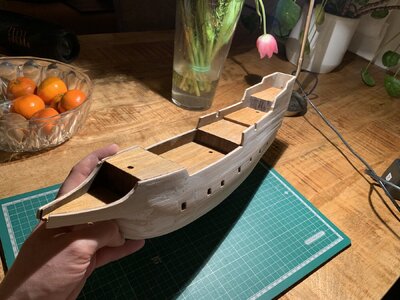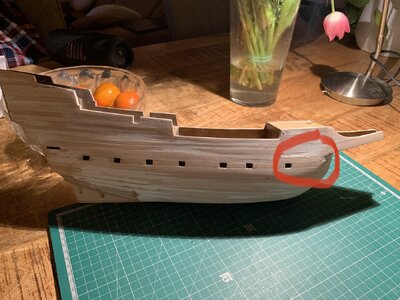Hi all,
I live in the Netherlans and I am new to building wooden ship models. In te past however, I have done many other model builds.
This year I started my very first kit: a beginners kit from Amati (see below). My goal is to one time build "De Zeven Provinciën" from Kolderstok.
For now I want to improve my skills and I started the Golden Hind from OCCRE
Golden Hind Build
So I started with the frame and decks.
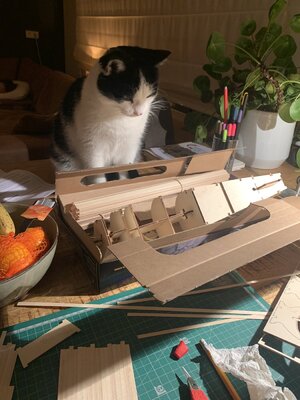
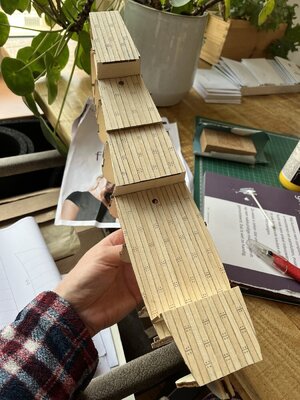
My first question to you guys: do I need to varnish this deck? I also bought the paint kit that OCCRE sells and it includes their satin varnish (https://occre.com/en/products/barniz-satinado-100-ml). I am affraid the deck will become to shiny, do you guys have any advice?
Many thanks already and groeten uit Holland.
I live in the Netherlans and I am new to building wooden ship models. In te past however, I have done many other model builds.
This year I started my very first kit: a beginners kit from Amati (see below). My goal is to one time build "De Zeven Provinciën" from Kolderstok.
For now I want to improve my skills and I started the Golden Hind from OCCRE

Golden Hind Build
So I started with the frame and decks.


My first question to you guys: do I need to varnish this deck? I also bought the paint kit that OCCRE sells and it includes their satin varnish (https://occre.com/en/products/barniz-satinado-100-ml). I am affraid the deck will become to shiny, do you guys have any advice?
Many thanks already and groeten uit Holland.




